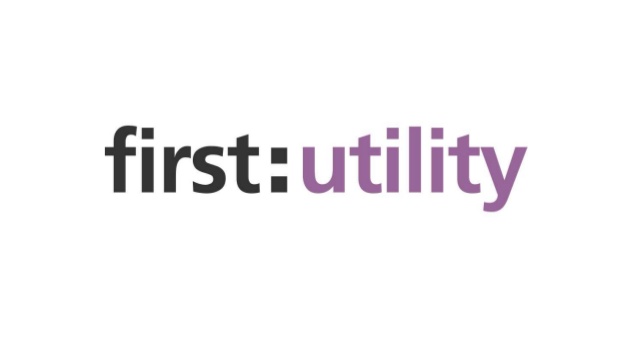You Ask, We Answer: A Deep Dive into Apache Solr for Enterprise Search
At Sirius, we believe in empowering you with transparent, honest, and comprehensive information to help you make the best decisions for your organization. In today's complex digital landscape, effective enterprise search is no longer a luxury; it's a strategic necessity. Apache Solr stands out as a powerful, Open Source solution, and we're here to answer your most pressing questions about it, providing you with the insights you need without any sales-speak.
You Ask: Why should my organization consider an enterprise search solution like Apache Solr?
We Answer:
In today's digital world, organizations face an unprecedented deluge of information that is often fragmented across various internal systems and data sources, creating "information silos". This fragmentation leads to significant operational inefficiencies; for instance, employees in a typical 1,000-person company can spend over nine hours per week simply trying to locate internal data, resulting in an annual productivity loss exceeding $5 million.
A well-implemented enterprise search solution, such as Apache Solr, transforms this raw, disparate data into actionable intelligence. It is crucial for maintaining a competitive edge, streamlining compliance efforts by making documentation easily retrievable, improving internal operational efficiency, and enhancing decision-making speed and customer support. Investing in a robust enterprise search solution like Solr is not just an IT expenditure; it's a direct investment in improving your bottom line by eliminating costly information silos and unlocking the untapped value within your organization's vast data assets.
You Ask: What exactly is Apache Solr, and what are its foundational strengths?
We Answer:
Apache Solr is a battle-tested, Open Source platform meticulously engineered in Java, built atop the foundational Apache Lucene library. Its core purpose is to enable secure, high-quality, and intuitive search experiences across all of an organization's information assets.
Solr's foundational strength comes from Lucene, which provides the core full-text indexing and search functionalities, relying on an inverted index for significantly faster searches over massive datasets compared to traditional SQL databases. Solr acts as the "layer of code" that transforms Lucene's potent core into a comprehensive, ready-to-use search platform, bundling pre-built capabilities like caching and a distributed architecture (SolrCloud) to ensure high performance.
One of Solr's most compelling attributes is its Open Source nature, released under the permissive Apache 2.0 license. This provides unparalleled freedom to adapt, modify, and optimize it for virtually any use case without incurring license fees, a stark contrast to proprietary solutions. Solr also benefits immensely from a large, vibrant, and highly engaged community of developers and end-users who provide extensive support and actively contribute new features, bug fixes, and security updates. This collaborative model, often described as "Community over code," can outpace proprietary roadmaps and reduces the risk of vendor lock-in.
You Ask: What advanced features does Solr offer beyond basic keyword search?
We Answer:
Solr provides an exceptionally rich and flexible array of capabilities that extend far beyond simple keyword matching. Here are some of its key features:
- Advanced Query Capabilities: It supports Boolean logic, proximity operators, wildcards, fielded searching, and the ability to assign weights for fine-grained relevance control. It also includes "find-similar" functionality and spell-checking.
- Natural Language Processing (NLP): Solr embraces NLP to deeply understand user intent and context, allowing users to ask questions in natural, conversational language rather than specific technical terms.
- Faceted Search & Filtering: These powerful and customizable features dynamically categorize search results based on indexed terms, displaying the number of hits within each category. This is crucial for refining searches on complex datasets, such as e-commerce platforms. Filter queries can also significantly boost search performance by caching results.
- Real-Time Indexing & Rich Document Handling: Solr offers robust "near real-time" indexing, ensuring new or updated content is almost instantaneously reflected in search results. It excels at handling a diverse array of rich document types, including PDFs, Microsoft Word documents, HTML files, and various multimedia content, often facilitated by the built-in Apache Tika parser.
- Relevance Tuning & Machine Learning Integration: Achieving optimal search relevance is paramount, and Solr provides sophisticated options for this. Administrators can boost or de-prioritize specific results based on criteria like fields or content format. It leverages Lucene's extensive text analysis features (tokenization, stemming, synonym expansion) for granular control. Furthermore, Solr supports advanced relevancy customization through machine learning, notably via its "Learning To Rank" feature. Its native support for NLP and mention of KNN "Neural" search indicate its intelligence capabilities, making it a robust backend for advanced AI search applications like Retrieval Augmented Generation (RAG) systems.
- Security & Access Control: Given the sensitive nature of enterprise data, Solr incorporates robust security measures, including comprehensive access control and user authentication. A critical feature is document-level security, ensuring users only view authorized content. Solr integrates seamlessly with various access-controlled data sources, supporting single sign-on (SSO) and SSL encryption. Its pluggable architecture allows for custom authentication and role-based authorization, ensuring compliance with standards like GDPR and HIPAA.
You Ask: How does Solr handle large-scale data and ensure continuous operation?
We Answer:
Solr is inherently optimized for high-volume traffic and is engineered for impressive scalability and resilience. Its architecture, particularly its SolrCloud distributed mode, is designed for seamless scalability across numerous nodes.
Key mechanisms for its scalability and high availability include:
- SolrCloud: This distributed mode is orchestrated by Apache ZooKeeper, which serves as the centralized cluster management system. ZooKeeper diligently tracks the state of each Solr node and core, manages configurations, and coordinates critical activities like leader elections. It ensures consistent and synchronized settings across all nodes and intelligently routes incoming requests to appropriate replicas.
- Sharding: A single logical index can be horizontally partitioned into "shards" across multiple nodes, with each shard holding a distinct subset of the overall index. This enables horizontal scaling for large data volumes and parallel processing of queries.
- Replication: To provide robust failover and enhance read performance, each shard can be copied as a "replica". Replicas maintain the same data as their primary shard, ensuring high availability and fault tolerance; if a node or leader fails, ZooKeeper seamlessly elects a new leader and reroutes queries to available replicas, ensuring minimal disruption.
- Load Balancing: Incoming queries are distributed evenly across multiple nodes/replicas to prevent overloading and improve performance.
- Multi-Region Setups: For global enterprises, Solr supports deploying clusters across geographically dispersed data centers, which reduces query response times, improves redundancy, and provides robust failover protection against regional outages.
- Multi-Threaded Indexing: In Solr 9.7.0 and later, this feature allows the indexing process to be broken down into parallel chunks, dramatically reducing indexing time for large volumes of data and improving resource utilization.
- Configurable Caching: Solr provides highly configurable caching mechanisms to optimize performance for repetitive queries, significantly reducing the need to re-process data and improving overall response times.
You Ask: What are the common challenges or operational considerations when implementing Apache Solr?
We Answer:
While Solr offers immense power and flexibility, it's crucial to be aware of certain complexities and operational nuances:
- Complexity & Learning Curve: Solr can be complex and time-consuming to install and configure, especially for those new to distributed search systems. Users often highlight a significant learning curve, requiring prior experience or a substantial time investment to master its proper configuration methodologies.
- Operational Overhead: Managing a SolrCloud cluster, particularly the intricacies of Apache ZooKeeper, can be tricky and resource-intensive. It demands careful tuning of memory, CPU, and networking to prevent bottlenecks. Organizations opting for a self-managed deployment must be prepared for ongoing maintenance, monitoring, and security management, requiring dedicated in-house expertise.
- Indexing Latency: Although Solr frequently advertises "real-time indexing," it provides "Near real-time" updates, meaning there can be some inherent latency. This is an important distinction; while updates are very fast, they are not instantaneously atomic in the same way a transactional relational database would be. For scenarios demanding absolute, immediate consistency or strict ACID compliance (e.g., core financial transactions), Solr would likely serve as a secondary, search-optimized layer rather than the primary data store.
- Limited Native Support for Structured Queries: While excellent for full-text search and optimized for document-centric data, Solr has limited native support for complex joins and lacks the advanced SQL-style aggregations (e.g., GROUP BY, HAVING, window functions) that relational databases excel at. Workarounds or external processing may be required for such operations.
You Ask: How does Solr compare to other popular search engines and traditional databases?
We Answer:
Apache Solr is a leading contender in the enterprise search space, often compared with Elasticsearch/OpenSearch and traditional relational databases. Understanding these differences is key to choosing the right tool for your needs.
Solr vs. Elasticsearch/OpenSearch:
All three are built on the Apache Lucene library, leveraging its core full-text indexing capabilities. However, they have distinct architectural philosophies and licensing models:
- Core Architecture: Solr evolved into its fully distributed SolrCloud mode, which relies on the external Apache ZooKeeper for centralized cluster coordination and state management. Elasticsearch and OpenSearch were designed with a distributed environment from inception, featuring internal cluster management and automatic node discovery, simplifying deployment without an external coordination service like ZooKeeper.
- Open Source & Licensing: Solr remains a truly Open Source project under the permissive Apache 2.0 license, embodying a "Community over code" philosophy. Elasticsearch has transitioned to a more restrictive license, with some advanced features requiring paid subscriptions. OpenSearch emerged as a direct fork of Elasticsearch following its licensing changes, offering all features for free under the Apache 2.0 license.
- Performance & Scalability: For most use cases (approximately 95%), the performance of Solr and Elasticsearch is "roughly the same". All three are highly scalable for large datasets and high query loads. Solr may have advantages with static data and offers precise facets without precision loss.
- Configuration & API: Solr offers flexible XML-based configuration and has evolved to provide a user-friendly API. Elasticsearch is noted for its "really great" JSON-based Query DSL.
- Ecosystem & Features: Elasticsearch is part of the broader ELK Stack (Kibana for visualization, Logstash for data processing). OpenSearch provides advanced security features like role-based access control as part of its free offering, which Elasticsearch typically includes in paid tiers. Both Solr and Elasticsearch/OpenSearch can integrate with Large Language Models (LLMs) for advanced semantic search and RAG applications.
Solr vs. Relational Databases (RDBMS):
Search engines like Solr are fundamentally different from RDBMS, as they are optimized for information retrieval rather than transactional integrity:
- Data Model: Solr is optimized for document-centric data (JSON, XML) and uses an inverted index for highly efficient full-text search. RDBMS uses a structured, table-based model with rows and columns, employing B-Trees and hash indexes for quick lookups on structured data.
- Full-Text Search: Solr is purpose-built and highly optimized for full-text search, offering advanced capabilities like ranking, stemming, and faceting. RDBMS provides only basic full-text search support.
- Aggregations & Joins: Solr has limited native support for complex joins and lacks the advanced SQL-style aggregations found in RDBMS.
- Scalability & Performance: Solr is superior for high-speed search across large, often unstructured datasets, designed for horizontal scaling. RDBMS typically scales vertically.
- ACID Compliance & Real-Time Updates: Solr operates in "near real-time" and uses optimistic concurrency, meaning it is not strictly ACID compliant. RDBMS, conversely, ensures immediate, strong consistency and full ACID compliance, crucial for transactional integrity.
Often, the best approach involves using both Solr and an RDBMS, with Solr indexing data from an RDBMS to provide a powerful search layer.
You Ask: Where does Solr shine in real-world applications, and is it a "best-in-class" solution?
We Answer:
Solr's impact is evident in its widespread adoption, making it a "best-in-class" choice for many demanding enterprise scenarios.
- E-commerce and Product Discovery Platforms: Solr is a leading choice for high-traffic e-commerce websites managing millions of products, delivering fast searches even during peak shopping times. Its powerful faceting and filtering features are perfectly suited for product catalogs, enabling users to effortlessly navigate and discover items. Its prowess is underscored by adoption by industry giants like eBay and Netflix for their core search functionalities.
- Knowledge Management and Internal Document Search: For organizations grappling with information silos, Solr provides a unified, searchable knowledge base, significantly improving internal efficiency and productivity. It empowers employees to quickly locate critical documents, emails, internal business information, and shared resources, fostering better collaboration and decision-making. Departments like customer support, HR, legal, and finance leverage Solr for consistent and compliant access to approved responses, policies, and documentation.
- Log Analysis and Big Data Insights: Solr is widely employed for large-scale log search and analysis, enabling organizations to extract valuable intelligence from vast streams of data. Its robust indexing and querying capabilities make it a strong component for integration into larger data processing workflows and complex tech stacks. In cybersecurity, its speed and efficiency are utilized for rapid analysis of big data to identify threats and patterns.
Solr holds a commanding 61.2% market share in enterprise search, significantly surpassing well-funded commercial competitors. Thousands of organizations globally rely on it, including household names like AOL, Comcast, IBM, Netflix, LinkedIn, MySpace, eBay, and Twitter. Its users span diverse industries and include major corporations like Apple, Visa, and government entities such as data.gov. This extensive list and market dominance indicate a deep-seated trust in Solr's stability, performance, and the responsiveness of its development model, reinforcing its status as a proven, mature, and highly reliable platform for mission-critical search infrastructure.
You Ask: What are the true cost implications of adopting Apache Solr?
We Answer:
While Apache Solr is fundamentally free to use, eliminating licensing fees entirely, it's essential to consider the Total Cost of Ownership (TCO) beyond the initial "free" aspect.
The "free to use" aspect is a significant advantage, but the evidence clearly indicates that the "cost of setting it up can be pretty high" and it "requires significant technical expertise". The "high learning curve" is a direct contributor to this TCO, as it necessitates substantial investment in training, hiring specialized personnel, or engaging expensive consultants. This complexity is a common characteristic of powerful, flexible Open Source tools.
Organizations considering Solr must realistically assess their internal technical capabilities and operational resources. For those with strong DevOps and search engineering teams, self-managing Solr provides maximum control, flexibility, and long-term cost savings on licensing. However, for organizations that prefer to minimize operational burden, lack specialized in-house talent, or need to accelerate deployment, a managed Solr service can significantly lower the barrier to entry. Providers like SearchStax offer fully managed SaaS solutions that automate deployment, management, and scaling, typically including cloud automation, high availability, monitoring, disaster recovery, and security options. This presents a crucial "buy vs. build" decision point, allowing you to leverage Solr's power without the complexities of infrastructure management.
We hope this comprehensive overview helps you understand Apache Solr's capabilities, its strategic advantages, and the practical considerations for its implementation. Our goal is to provide you with all the information you need to make informed decisions about your enterprise search strategy.
















































